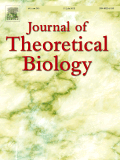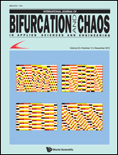
Journal of the Royal Society Interface
metrics 2024
Fostering Collaboration, Advancing Scientific Frontiers
Introduction
Journal of the Royal Society Interface is a premier interdisciplinary journal dedicated to the convergence of life sciences, physical sciences, and engineering. Published by the esteemed Royal Society in the United Kingdom, this journal serves as a dynamic platform for innovative research that pushes the boundaries of both fundamental and applied science. With a significant impact factor and ranked in the prestigious Q1 category across multiple domains, including Biochemistry, Bioengineering, and Biomedical Engineering, the journal consistently prioritizes high-quality contributions that innovate and inspire. Accessible to researchers, professionals, and students alike, it aims to cultivate a deeper understanding of complex interactions and synergies among biological and physical systems. From its inception in 2004 to its evolving knowledge contributions through 2024, the Journal of the Royal Society Interface plays a pivotal role in shaping future research directions and fostering collaboration across scientific domains.
Metrics 2024
 1.10
1.10 3.70
3.70 4.00
4.00 168
168Metrics History
Rank 2024
Scopus
IF (Web Of Science)
JCI (Web Of Science)
Quartile History
Similar Journals

JOURNAL OF THEORETICAL BIOLOGY
Unraveling Biological Mysteries Through Theoretical FrameworksJOURNAL OF THEORETICAL BIOLOGY, published by Academic Press Ltd - Elsevier Science Ltd, stands as a pivotal source of scholarly research in the domains of theoretical and applied biological sciences. Since its inception in 1961, this esteemed journal has contributed significantly to the advancement of knowledge across various fields, including agricultural sciences, applied mathematics, biochemistry, genetics, immunology, and medical research. With a commendable Q2 ranking in multiple categories for 2023, it showcases robust impact throughout the academic community, reflected in its high Scopus rankings, which place it in the top 25% of journals in several categories. The journal's commitment to fostering interdisciplinary research supports its objective of bridging theoretical frameworks with practical applications, making it an essential resource for researchers, professionals, and students alike. With its wide-ranging topics and a keen focus on innovation, the JOURNAL OF THEORETICAL BIOLOGY is indispensable for those seeking to explore the complexities of biological systems and their mathematical modeling.

JOURNAL OF BIOMECHANICS
Driving Excellence in Biomechanics and RehabilitationJOURNAL OF BIOMECHANICS is a premier journal published by Elsevier Science Ltd, renowned for its impactful contributions to the field of biomechanical research since its inception in 1968. With an ISSN of 0021-9290 and an E-ISSN of 1873-2380, this journal serves as a vital resource for researchers, practitioners, and students invested in the interdisciplinary domains of Biomedical Engineering, Biophysics, Orthopedics, Sports Medicine, and Rehabilitation. The journal consistently ranks in the Q1 and Q2 quartiles across several categories, reflecting its dedication to high-quality and innovative research, as evidenced by its impressive Scopus rankings—particularly within Medicine Rehabilitation (Rank #23/161). Despite being a subscription-based journal, it offers crucial insights into mechanical analysis and applications that enhance our understanding of human movement and performance. With projections of coverage extending to 2024, the JOURNAL OF BIOMECHANICS remains an indispensable platform for disseminating cutting-edge research that drives advancements in health, performance, and injury rehabilitation.

npj Systems Biology and Applications
Unveiling New Dimensions in Biological Systemsnpj Systems Biology and Applications, published by NATURE PORTFOLIO, is a premier open-access journal that has been at the forefront of the field since its inception in 2015. With a commendable focus on the interdisciplinary integration of applied mathematics, biochemistry, computer science, and drug discovery, the journal currently enjoys a Q1 ranking across multiple categories, showcasing its significant impact within the scientific community. In 2023, it ranked 70 out of 635 in Applied Mathematics and holds a notable place in the 89th percentile, confirming its esteemed reputation among researchers. Situated in the United Kingdom, this journal not only promotes innovative research in systems biology but also serves as an essential platform for the dissemination of high-quality studies that delve into modeling, simulation, and the application of biological systems in drug discovery processes. With an open-access model, authors can reach a broad audience, enhancing collaborations and advancing knowledge across disciplines, making it an indispensable resource for researchers, professionals, and students alike seeking to contribute to the evolving landscape of systems biology.

PHYSICAL BIOLOGY
Decoding Life's Complexities Through a Physical LensPHYSICAL BIOLOGY is a prominent journal published by IOP Publishing Ltd, focusing on the interdisciplinary field of biophysics, cell biology, molecular biology, and structural biology. Established in 2004, this journal has quickly made its mark in the academic community, currently ranking in the Q2 category in Biophysics and Q3 in Cell, Molecular, and Structural Biology as of 2023. With an ISSN of 1478-3967 and E-ISSN 1478-3975, it serves as a vital platform for disseminating groundbreaking research that bridges physical principles with biological systems. While currently not providing Open Access options, the journal offers access to a wealth of knowledge crucial for researchers, professionals, and students alike who are eager to explore the intricacies of living organisms through a physical lens. Situated in the United Kingdom, PHYSICAL BIOLOGY emphasizes the importance of multiscale approaches and innovative techniques, making it an essential resource for those working at the intersection of physics and biology.

Journal of Cellular Automata
Fostering Innovation in Computational ParadigmsWelcome to the Journal of Cellular Automata, an esteemed publication dedicated to advancing the understanding and application of cellular automata in various contexts. Published by OLD CITY PUBLISHING INC in the United States, this journal serves as a pivotal platform for researchers, professionals, and students in the fields of Computer Science and Control and Systems Engineering. Since its inception in 2008, the journal has provided a unique avenue for disseminating original research, reviews, and case studies that drive innovation in these interdisciplinary areas. Although it currently holds a Q4 ranking in Scopus for both Computer Science and Control and Systems Engineering categories, the journal aims to enhance its impact through rigorous peer review and the promotion of groundbreaking ideas. While access options do not include an open-access model, contributors and investigators can look forward to a vibrant exchange of knowledge dedicated to exploring the complexities and applications of cellular automata in various systems. Join us in our journey as we delve into the intricacies of this fascinating domain, contributing to the collective understanding and technological advancement within the scientific community.

MECHANICS RESEARCH COMMUNICATIONS
Advancing the Frontiers of Mechanics and MaterialsMECHANICS RESEARCH COMMUNICATIONS, published by PERGAMON-ELSEVIER SCIENCE LTD, is a prestigious journal in the fields of Civil and Structural Engineering, Condensed Matter Physics, Materials Science, and Mechanical Engineering. With an ISSN of 0093-6413 and E-ISSN of 1873-3972, it has made significant contributions to the understanding and advancement of mechanics and materials since its inception in 1974. The journal is well-regarded in academia, holding a Q2 ranking across multiple categories as of 2023, and ranking in the 65th percentile for Mechanical Engineering. Researchers and professionals benefit from its peer-reviewed content, which includes a wide range of articles from fundamental research to applied technological developments. Although currently not an open access journal, it remains a vital resource for those focused on innovating within the engineering and materials science domains. With its established legacy, MECHANICS RESEARCH COMMUNICATIONS continues to shape the discourse in mechanics and engineering, making it essential reading for students and practitioners alike.

Biophysics Reviews
Exploring the Interplay of Biochemistry and PhysicsBiophysics Reviews, published by AIP Publishing, is an emerging journal in the field of biophysics, aiming to bridge the gap between fundamental biophysical research and applied sciences. With an ISSN of 2688-4089, this journal provides a critical platform for the dissemination of high-quality reviews covering the interplay between biochemistry, molecular biology, biotechnology, and materials science. As of 2023, it provides essential insights for researchers and professionals interested in understanding biomolecular processes at a physical level. Although the journal is not currently open access, it is making strides in establishing its impact in the competitive landscape, as indicated by its Scopus rankings in various related fields, including biochemistry and bioengineering. With a focus on enhancing collaborations among scientists and practitioners, Biophysics Reviews is poised to become a vital resource for anyone looking to deepen their understanding of how biophysical principles can be applied to solve complex biological challenges.

BIOLOGICAL CYBERNETICS
Connecting Biology and Computer Science for Tomorrow's SolutionsBIOLOGICAL CYBERNETICS is a premier journal published by SPRINGER, dedicated to advancing the fields of biotechnology and computer science through the lens of biological interactions. With an ISSN of 0340-1200 and an E-ISSN of 1432-0770, this esteemed journal has been a cornerstone of academic research since its inception in 1961 and is set to continue influencing the landscape of biological cybernetics through 2024. The journal currently holds a Q3 ranking in the Biotechnology category and a Q2 ranking in miscellaneous Computer Science according to the 2023 category quartiles, showcasing its credibility and impact in the interdisciplinary nexus of these fields. Although it does not provide open access options, researchers and students can engage with its innovative content that includes original research articles, reviews, and methodologies that explore the computational modeling of biological systems and the integration of artificial intelligence in biological research. With its strategic location in the United States and a robust publication record, BIOLOGICAL CYBERNETICS remains an essential resource for anyone looking to deepen their understanding and application of cybernetic principles within biological contexts.

INTERNATIONAL JOURNAL OF BIFURCATION AND CHAOS
Advancing Knowledge in Bifurcation DynamicsINTERNATIONAL JOURNAL OF BIFURCATION AND CHAOS is a premier scholarly publication renowned for its focus on the intricate dynamics of bifurcation and chaotic systems across various scientific disciplines. Established in 1996 and published by World Scientific Publishing Co Pte Ltd, this journal plays a significant role in fostering interdisciplinary research within the realms of applied mathematics, engineering, and modeling & simulation, boasting impressive quartile rankings of Q1 in Multidisciplinary studies and Q2 across other key categories as of 2023. With an active convergence of cutting-edge research and comprehensive reviews, this journal engages with the academic community by providing a platform for novel findings and theoretical advancements. Researchers, professionals, and students alike will benefit from its rich content, reflecting the ever-evolving landscape of complexity science. Access to the journal is subscription-based, ensuring a curated selection of high-impact articles that adhere to the highest standards of academic excellence.

Nonlinear Dynamics Psychology and Life Sciences
Advancing Understanding of Nonlinear Patterns in Life SciencesNonlinear Dynamics Psychology and Life Sciences is a leading journal published by the SOC CHAOS THEORY PSYCHOLOGY & LIFE SCIENCES, focusing on the intersection of nonlinear dynamics and psychological phenomena as well as their implications in life sciences. With an ISSN of 1090-0578 and an E-ISSN of 1573-6652, this journal stands out as a reputable source of innovative research and analytical studies that contribute significantly to the fields of applied mathematics and psychology. By delving into the complex behaviors and patterns of dynamic systems, the journal addresses vital contemporary issues, making it essential reading for researchers, professionals, and students alike. Although it operates on a traditional access model, the journal's insights are invaluable for understanding the empirical background behind nonlinear dynamics in psychological research. Recognized within the academic community for its contributions, it holds a 2023 Scopus ranking of #436 out of 635 in the Applied Mathematics category, placing it in the 31st percentile, and it is designated as Q3 in its quartile categorization. As a bridge between theoretical foundations and real-world applications, Nonlinear Dynamics Psychology and Life Sciences aims to foster interdisciplinary dialogue and inspire future research in this exciting and evolving field.